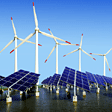- Home >
- Our Actions >
- Ambassador report
5
Comments
A visit to Waste Water treatment plant |
|---|
|
I had a chance to visit the wastewater treatment plant in Malaysia. The process to treat wastewater are such as sewage treatment process and sludge treatment process. Sewage Treatment Process The sewage treatment process divided into 6 parts that is distribution chamber, Grit Chamber, Primary Clarifier, Aeration Tank, Secondary Clarifier and Measuring Tank. The Bunus Regional Sewage Treatment Plant (RSTP) consists of liquid and solid processes. Liquid process included Pre-treatment and Biological Treatment. The solid process included thickening, Dewatering and Anaerobic Digestion. Firstly, Bunus RSTP will get the sewage from Semarak Pump Station and Setapak Pump Station. The flow is distributed by the distribution chamber at the inlet point of the treatment plant. Then the grit chamber which is equipped with rotary drum screen and grit collector will remove the rubbish such as plastic bags or inorganic particles such as grits, sand to prevent damages of the equipment. The sewage will move to primary clarifier help to remove smaller and lighter particle after the grit chamber. The primary sludge that settled at the bottom of the clarifiers will be collected by chain flight collector and send to gravity thickener (GT). The Aeration Tank will further remove the BOD, Nitrogen and carbon compound from the sewage. This entire process is using biological treatment. After that the treated sludge from the aeration tank will be clarified again in the secondary clarifier. The treated supernatant will overflow to the next measuring tank while the settled sludge at bottom will be collected and transferred to sludge treatment facilities. The last steps in sewage treatment process is the measuring tank that a portion of effluent will be recycled and used as utility water at the plant such as polymer preparation, desulfuriser and cleaning works. Sludge Treatment Process After sewage treatment processes, wastewater will undergo sludge treatment processes. Sludge treatment consists of several processes. It includes gravity thickener, mechanical drum thickener, dewatering system and anaerobic digester. The thickened sludge will then be transferred into the anaerobic digester for stabilization. Next, it is the mechanical thickener. Before thickened sludge is transferred into the anaerobic digester for stabilization, it is first transferred into the mechanical thickener. Mechanical thickener functions to thicken the secondary sludge for further process in the anaerobic digester, with the assistance of polymer. Then, the thickened sludge will be fed to the anaerobic digester for stabilization. In this anaerobic digester, thickened sludge will be stabilized prior to dewatering. The gas produced from the anaerobic processing of sludge will be collected and undergoes combustion in the combustion tank. Normally, the gas combustion will be carried out during night time. The stabilized sludge generated from the plant will be dewatered by screw press. In this process, polymer is used in order to ensure that the sludge cake is in optimum dryness. This is done in the polymer flocculation system. Then, the sludge cake formed is stored temporarily in the sludge hopper before it is being disposed. Sludge cake is loaded into a bin to ensure more efficient management of it. Thickened sludge is formed into sludge cake to ease the transportation of it to other places, where sludge cake is used as fertilizers. |
|
|










 Previous : PAROL of Hope
Previous : PAROL of Hope









5 Comments
Quite an interesting process of treating sewage. It is also heartwarming to note that a portion of effluent will be recycled and used as utility water at the plant such as polymer preparation, desulfuriser and cleaning works. This also reduces the repercussions that can potentially be brought up by untreated sewage. Thanks for sharing:)
Posted 06-01-2015 19:48
Thanks for your detailed report on Waste water treatment plant. I had also visited a waste water treatment plant in Collwyn Bay, UK during my UK trip .
Posted 06-01-2015 01:52
Thank you so much for the vivid report on the Waste Water Management system.
I've also visited one in Korea. The system seems almost same :)
Posted 05-01-2015 14:54
Well explained sewage treatment process, Wen Shin. The report is aptly detailed & you have noted the plant visit very carefully.
Posted 04-01-2015 20:17
Thanks for sharing the experience with us :)
Posted 03-01-2015 01:52